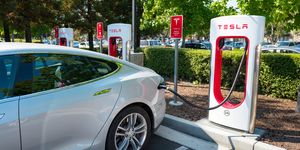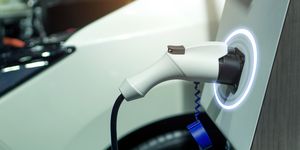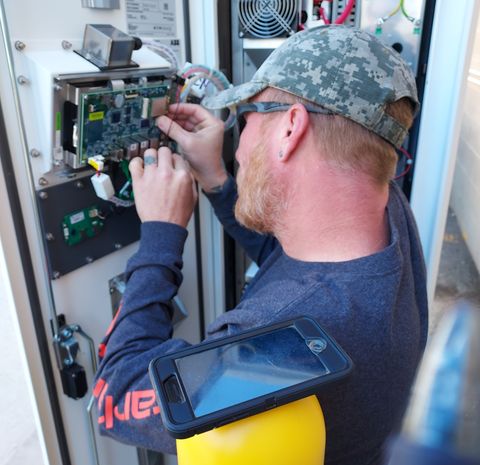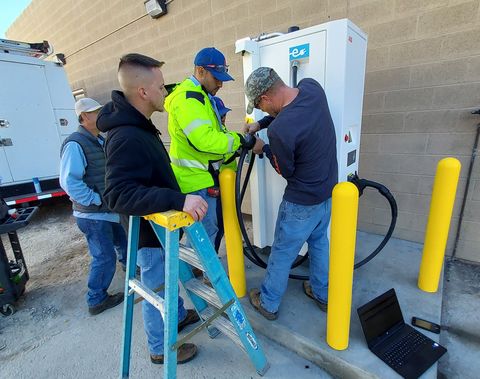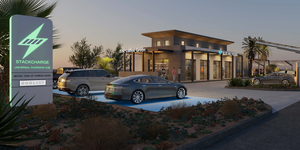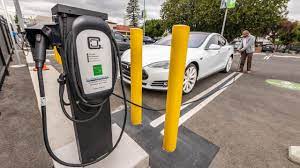https://www.autoweek.com/news/a40576648/ev-charger-maintenance-problem/
The EV Charging Industry Has a Maintenance Problem
Anecdotal evidence of frequent public charger failures has been supported by studies that show a much bigger problem with maintenance than might be admitted by the charger-installation companies themselves.

- One academic study found only 72.5 percent of 657 public fast chargers in the San Francisco Bay area in working order.
- EV owners continue to be highly satisfied with their vehicles, while are frustrated with the state of our public charging infrastructure.
- One company, Charge Enterprises, both installs and maintains EV charging stations, while pointing out the next 10 to 20 years we will see a massive bandwidth increase for such maintenance services.
Katrina Nelson of Brisbane, Australia, owns a Tesla Model 3, and on a weekend on the Sunshine Coast last January, she encountered four Superchargers in a row that weren’t operational. Via Twitter, she reported, “My Model 3 is on 0%.” Last year an EV user in Maryland reported, also by tweet, that both fast chargers at Kenhill Center in Bowie, Maryland, were faulted, and another user added that “both utility-owned fast chargers at the District Court in Essex, Maryland, are also reporting as inoperable.”
Lanny Hartmann of Columbia, Maryland, who drives both a Tesla Model S and a Think City EV, posted the information on his state maintenance problems at PlugInSites.org. “The issue of broken EV chargers is underreported, and not realized by people unless they are the EV drivers who depend on them,” Hartmann told Autoweek. “If you look at the utility-run stations here in Maryland, they are down far more than the companies say. One station in a community college parking lot was out for months. The chargers should have the same reliability as the electric grid the utilities maintain. As EV drivers, we’re disappointed when we see stations used as photo ops with the governor, then forgotten about.”
A Truth About Cars reporter staying in a “swanky hotel in downtown Seattle” discovered that four of six of the hotel’s chargers were inoperative. An investigation by Channel 4 in Britain found that more than 5.2 percent of the 26,000 public chargers examined were broken—a total of 1352 units. And an academic study co-authored by an emeritus professor at the University of California, Berkeley, released last March, looked at 657 public DC fast chargers in the Bay Area, finding only 72.5 percent of them in working order. “This level of functionality appears to conflict with the 95 to 98 percent uptime reported by the EV service providers who operate the EV charging stations,” the report said.
A 2022 Plug In America survey said that EV owners are in general “very satisfied” with their vehicles and would buy another one, but “continue to voice frustration with public charging infrastructure, with the most common issues being broken or nonfunctional chargers or too few charging locations. However, the Tesla Supercharger network scored significantly better than its competitors on every metric.”
Obviously, the level of outage is a problem if EVs are going to take over the auto industry, an outcome that now appears inevitable. Motorists would be unlikely to accept a similar percentage of shut-down gas stations. Andrew Fox says he’s trying to address the problem. He is founder and CEO of Charge Enterprises, which both installs and—the critical point—maintains EV charging stations.
“We do design, installation, and maintenance,” Fox said in an interview with Autoweek. “There are approximately 18,000 dealers in the US and almost all of them will soon have mandatory requirements to upgrade to sell EVs. We are working with numerous dealers across 12 brands and multiple states to meet those requirements while minimizing disruptions to their business. For the typical dealership, it’s a six-figure investment. We offer a robust engineering and maintenance business that speaks the language of the major automakers, and in the next 10 to 20 years we expect to see a massive bandwidth increase in the need for what we do. We’re competing with mom-and-pop electricians.”
Fox cited recent reports that 20 to 25 percent of the chargers installed in the last eight years are non-operational. “This is a problem and a horrible look, but it can be solved,” he said. “We’re not afraid to put steel-toed boots on the ground to fix the problem.” He said Charge Enterprises had $477 million in revenue in 2021, and $163 million so far this year, but is not yet profitable in the current market.
According to Fox, EV station pain points include deferred maintenance, absent operators, decommissioned software, putting stickers over the operating/payment instructions and broken charging wands. “We have only one percent electric cars on the road now, and the infrastructure is actually lagging behind even that one percent. The network has just been neglected.” Some of the major charging networks are “software players wrapped in hardware,” he said. “Design, install, and maintenance is not their thing.”
Jonathan Levy is chief commercial officer at EVgo, which maintains 1700 fast-charging “stalls” (one “stall” per car) at 850+ locations across more than 30 states. He said the whole industry has work to do to improve charger reliability, but the problem is not as acute as it is sometimes portrayed in the press.
EVgo’s own research, Levy said, found “much higher rates of working chargers” in the Berkeley study area. “Look,” he said, “as a company that makes money when customers can put electricity in their cars, we have a natural incentive to keep our chargers up and running. Some companies concentrate on software and others networking or selling, but our model is primarily to own, operate, and maintain stations. We are just as frustrated as the customers when any unit is down. We target 98 percent uptime in our network.”
For his part, David Rempel, retired from Berkeley’s department of bioengineering, stands by his research. “There are different ways of measuring uptime,” he told Autoweek. “It can be done remotely, or it can be hands on. Our approach involved going out into the field with 20 volunteers and testing the individual chargers. If they charged our cars for at least two minutes, or were already in use, we counted them as working.”
Rempel said, “We need to ask why we have these high failure rates, and address the problem before the federal government spends $5 billion on the charging infrastructure.”
In proposed rules posted in the Federal Register last June, the Department of Transportation’s Federal Highway Administration outlines guidelines for public charging projects funded under the National Electric Vehicle Infrastructure (NEVI) Formula Program, which got nearly $5 billion in funding. The purpose of the rules is “to facilitate data collection, access, and reliability.”
Among many other provisions, the federal rules call for accessible and efficient provisions for consumers to report outages, and for installation and maintenance work to be “performed safely by a skilled workforce that has appropriate licenses certifications and training.” Electricians taking part in the funded work will have to get certified through a training program, or via an electrical apprenticeship. And that lets out poorly trained moms and pops, presumably.

